#21 species of birds in this collage
Text

A collage I made a few years ago, or some of my favorite animals featured in Wild Kratts.
I love the animation for this show, all the animals have so much personality while still looking pretty dang accurate.
Animals in this collage:
Chinese pangolins (accidentally put that picture in there twice)
Black-footed ferrets
Secretary bird
Antelope jackrabbit
Pronghorns
Peregrine falcon and chicks
American pine marten
American kestrel
Burrowing owl
Canada lynx
Golden-tailed sapphire (hummingbird)
Streaked tenrec
Loggerhead shrike
Elf owl
Bobcat
Fire salamander
Purple martin
Superb bird-of-paradise
Hawksbill sea turtle
Black-capped chickadee
Great emerald pondhawk (dragonfly)
Emerald-chinned hummingbird
Great blue heron
Arctic wolf
Cheetah
African crested porcupine
Pileated woodpecker
European hedgehog
Blue jay
Dyeing poison dart frog
Bald eagle
Nile crocodile
American robin
Manta ray
Bat-eared fox
African wildcat
Red panda
Osprey
Golden bamboo lemur
Ocelot
Tokay gecko
Thomson’s gazelle
Wandering glider/globe skimmer (dragonfly)
Green heron
Spotted eagle-owl
Gray wolves
Prairie falcon
Green-breasted mango (hummingbird)
Dholes
Husky dog
Three-toed sloth
Eastern screech-owl
#my edits#wild kratts#birdposting#I guess#there are …#(counts on fingers)#…….#21 species of birds in this collage#i think
13 notes
·
View notes
Text
Storm Hawks OC Challenge - October's Bird (10/21)
Spook Month is here! And with it comes a new bird that you guys can make an OC out of. I looked through a number of spooky birds and settled on this one:


Pesquet's Parrot (Psittrichas fulgidus)! Otherwise known as the Dracula Parrot, or the vulturine parrot, this is a fruit-eating species native to New Guinea. Unfortunately there's not much information on them in their Wikipedia page, so I've not got any suggestions for inspiration aside from the vampire aesthetic.
Rules are going to be ever so slightly different from this month forward, so here they are:
Minimum requirements to be put in the final collage and contest will be a name, occupation and where they fit in the Storm Hawks universe, and the character’s home Terra (if they’re a wanderer, then use the Terra they were born on).
Art is not mandatory, but written entries should have a few paragraphs of backstory and a physical description of the character.
Elements of the chosen bird’s appearance should be included in the character’s design.
The deadline for entries has been pushed back to the 24th of the month. Like before, a collage will be put together of everyone’s entries.
On the 24th, all entries will be held to a public vote for a winner! The overall favourite will get a free art request from me, fully lined and coloured.
Entrants who are part of the Storm Hawks discord server will have the chance of getting a custom role for the next month! If you’re not part of the discord server, please ask for an invite if you’re interested.
Make sure to tag me when you finish your characters so I know to put them in the collage!
I hope you have fun! Give me your spookiest characters for Halloween!
#storm hawks#storm hawks bird challenge#storm hawks oc challenge#nerd corp storm hawks#character challenge#art challenge#fandom challenge#op#pesquet's parrot#pesquet's parrot oc#dracula parrot oc#october 21 entry#bird contest
17 notes
·
View notes
Photo
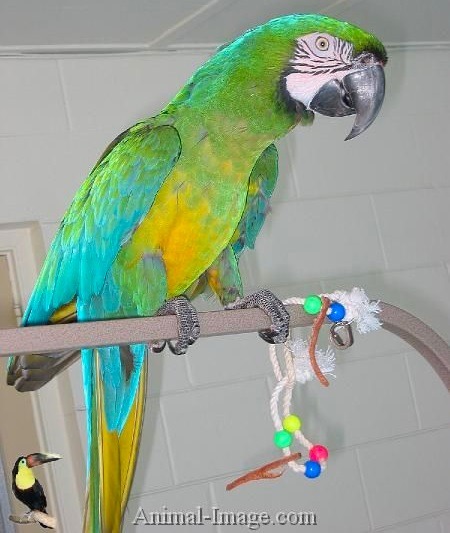
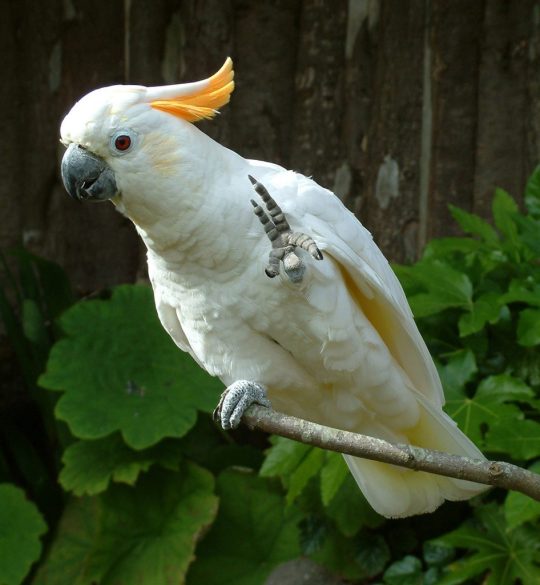
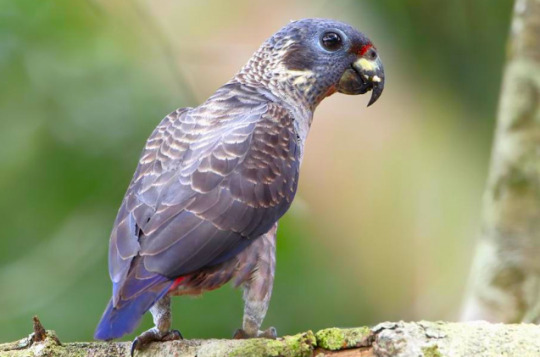
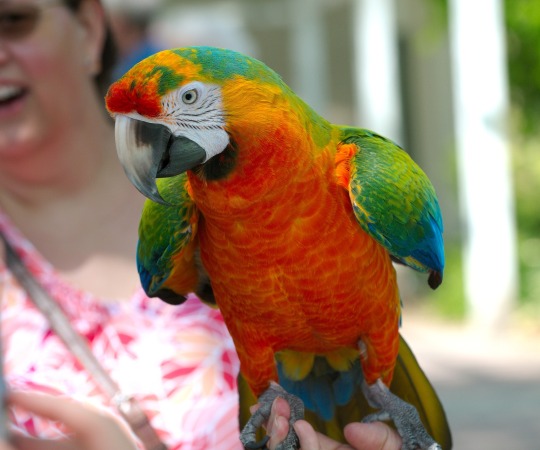

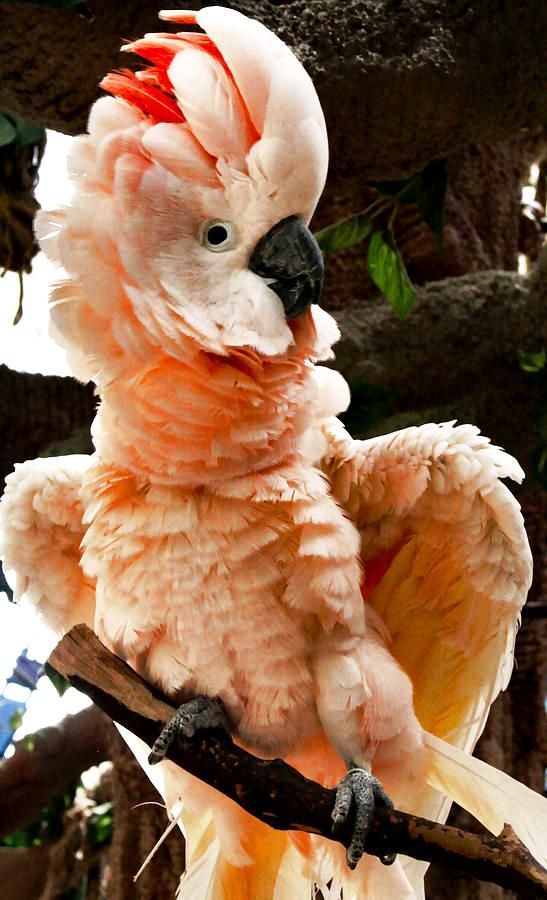

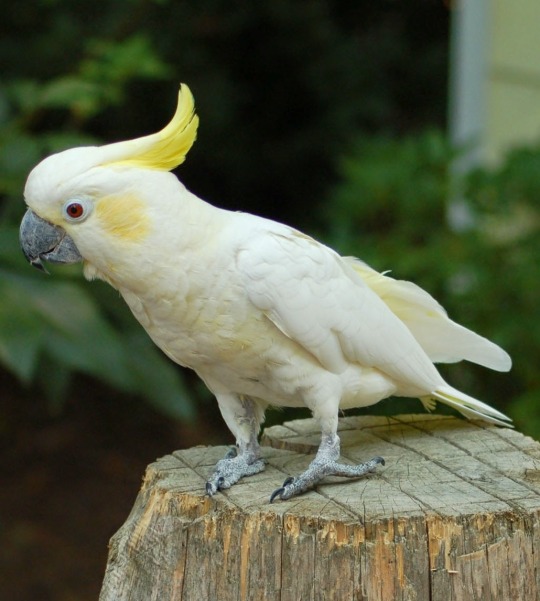

My Birdie Wishlist - no one is going to read all of this
Just for fun, here is my wishlist of birds parrots.
I made a collage last spring of all the exotic pets I wanted (most of which are gone now, as I realize with my limited time and resources, as well as living in Norway, I will have to stick to my favorites, namely parrots and reptiles), which had sixteen parrots on it, changing species on and off as I learned more and understood my wishes and abilities more.
(I do not want any more Poicephalus and they are not suitable with other parrots, I can never afford a €25k Palm cockatoo, I like some species but they have to be down-prioritized for various reasons, etc...)
I thought hell, lots of breeders and enthusiasts keep dozens of parrots in aviaries, sixteen is not that much? But I realized recently as I thought planned dreamed a little more, that I want to have a relationship with each bird, so I will have to keep my wishlist to under ten birds. (Also, I already have two, though they are middle-aged, they have probably 10-20 and 20-40 years left, respectively.)
So these nine ^ are what came out finally.
Miligold (military x B&G macaw), Citron-crested cockatoo, Dusky pionus, Camelot macaw (75% Scarlet, 25% B&G), Hawk-headed parrot, Moluccan cockatoo, Bronze-winged pionus, Lesser sulphur-crested cockatoo, and Golden conure.
I also have a soft spot for the Alexandrine, especially the new lutino mutation (which is actually a hybrid with the Indian ringneck). It sounds shallow but I love yellow birds and I will pick the one that has a better suited temperament, also the Golden conure is endangered so I don’t know if it should be considered unethical to keep them as pure pets. (And €2000 is a pricey little conure. Hardly any of the other birds cost that much.)
Also I may want a white-bellied caique again instead, as my Pumpkin sadly got a wasting disease and died, and he was an amazing little puppy. :(
Cockatoos have an unfair reputation, in my opinion. Yes they are special and yes they are high-maintenance, but I find a lot of parrot people just can’t stand cockatoos, or fear them. (I on the other hand, am that way with Poicephalus and Amazons. XD They scare me.)
I love the flashiness and sugar-high toddler personality of the cockatoos. With these three (or just the first two, we will see), I will only get females as young birds, and raise them with the flock. Males are far more unpredictable, and some turn out as killers of other birds.
(Also I love the red-tailed blacks... and there is a breeder in Norway that sells them for about €3k. But it is a very special bird that would need careful planning. My favorite is the yellow-tailed, but they cost some €25k per bird.)
Hawk-heads also seem to have a strange reputation online, that got spread like “I heard someone said that someone read that they can be really mean”, while when you read from first-hand experience, they seem like any normal South American parrot (their closest relative is the caique).
I have owned sulphur-crested cockatoos and a scarlet macaw before, but that was when I was 15-21 years old and living in an apartment. A completely different life situation, and even a different person who owned them. I am now nearly 30 and won’t be able to build this flock up for quite a few years yet. Maybe I will have the two Pionus in 2-3 years.
I will be making an entire building for these, by the way. I love cockatoos, but not indoors 24/7. XD Especially as they’re the only parrots that regularly scream in the dark. Because they don’t want to go to bed. (And 100 other reasons. Many animals are lovely to interact with, but very difficult to keep inside the home.)
I have heard a bit of iffy things about pulmonary problems in macaws from being kept with toos and greys, especially the B&Gs (theorized to be due to their bare nostrils), and both of these are B&G hybrids. Some terrible stories, some have kept them together for decades with no problem (rescues/sanctuaries especially).
I will probably keep the macaws separate in their own smaller indoor aviary, in another room, but let them share space with the other birds outdoors, and go out to the main area for enrichment, but keep it very clean and dust-free, and the macaws would be in their own air-space for 18+ hours per day.
I have made a lot of videos, articles and lengthy annoying forum posts against hybrids and the pet parrot trade in general between 2008-2014, but I have changed in my beliefs a lot since then. So in case you stumble upon my videos... know that I don’t stand by them anymore, but I am leaving them up.
5 notes
·
View notes
Photo

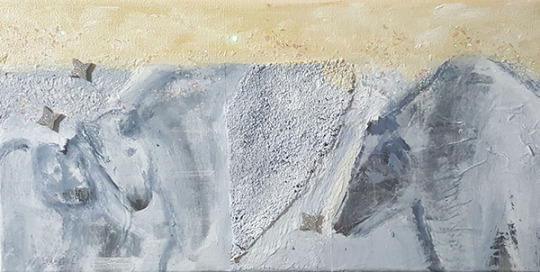
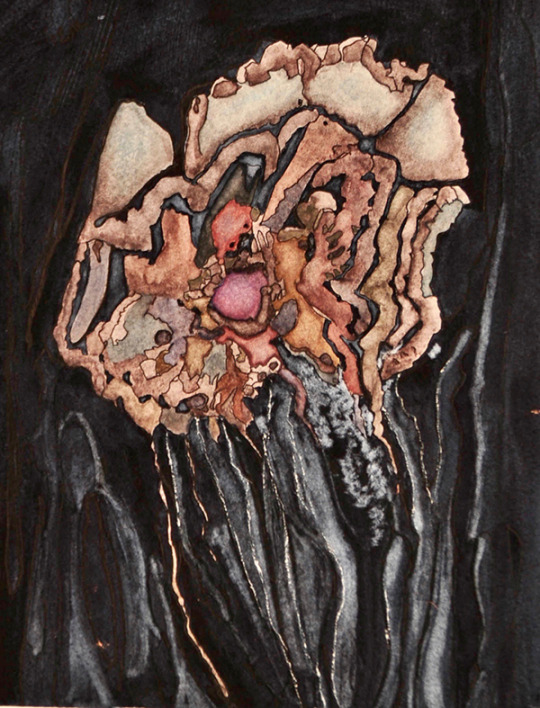



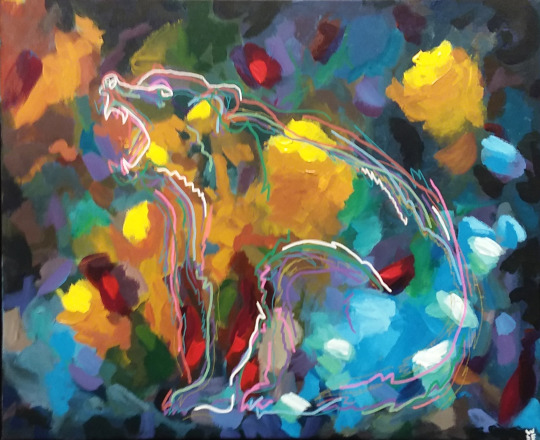
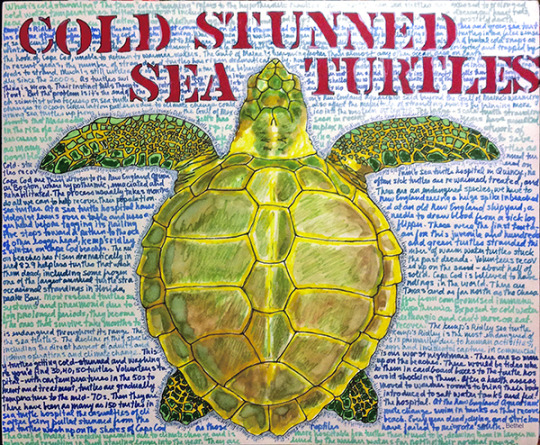
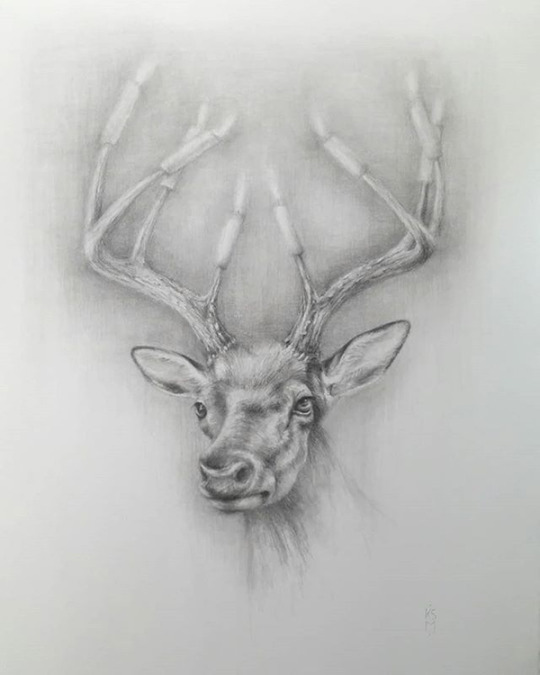

Lauren Chambers - Portrait of a Black & White Ruffed Lemur - photography - 25" x 37" - This series entitled “Obsolescence” is a black and white photographic narrative to bring awareness to earth’s incredible creatures who may become extinct within my lifetime due to global warming and deforestation. For me, this fact is both shocking and painfully devastating. Having always had a special connection with animals, I now have an opportunity to give them a voice before it’s too late. My goal is to capture what I see in their eyes, then interpret that into clear and compelling images that speak straight to the viewer.
Frank Holt - Concrete Cage - mixed media on canvas - 8″ x 16" - The photos collaged are two of polar bears taken in the 1960s when they were housed at the Atlanta Zoo in concrete blocks, concrete walls, flooring, etc. I updated them for today's concerns about shrinking ice caps and endangered polar bears.
Pat Borow - Diet For A Dying Planet - watercolor and archival ink on watercolor paper - 16”x 14” - . . . part of the shifting patterns in the oceans, attributed to global warming include carbon dioxide mixing with water to produce acidic conditions. It seems that, as atmospheric levels of C02 rise, the water becomes more acidic. Fish, shellfish and corals can’t thrive in acidic water, but jellyfish do. Asian societies already eat jellyfish, but as part of, not all of, their diets. Societies currently dependent on fish as protein and as a dietary staple will be forced to adapt, and, as acidic conditions spread and fish populations die out, jellyfish could become a primary protein source worldwide. Diet For A Dying Planet portrays a Portuguese Man-O-War.
Terri Whitesel - Homeless - pastel - A recently released survey of 529 bird species in the US and Canada found that bird populations have fallen by 29% since 1970, a loss of nearly three BILLION birds. Common birds are critical to the ecosystem. They control pests, pollinate flowers, spread seeds and regenerate forests.
Christine Gautreaux - Heron Helping - mixed media collage - 8" x 10" - The Adubon Society tells us Global warming is the greatest threat to birds and other wild-life in human history. The rate of global warming is already impacting birds, their prey, and their habitat. Those impacts will become more severe over the coming decades, leading to the loss of one-quarter to one-third of all species on earth, including many bird species.
Hellenne Vermillion - Hydrangeas and Sparrows - silk, acid dyes - 25" x 52" - Global warming affects bird migration, breeding and feeding cycles the world over. Many birds are already disappearing from our neighborhoods. Their habitats are being destroyed and their cycles are being disrupted by increase in temperature.
Will Eskridge - Story Around A Campfire - acrylic - 16" x 20" - What does it mean to be a sentient being? Who determines which species is more important? There are secrets to animals that we, as humans, can not comprehend. These mysteries are not unlike those of the universe. The more that is explored, the more secrets are revealed to be decrypted. Layers cover layers that cover more layers.
Vicki Bethel - Cold Stunned Sea Turtles - acrylic and ink - 18″x 21½” - It is a sad irony that warming oceans are causing turtles to freeze to death. The warmer waters lure the turtles far north of their normal ranges and later in the year. They get trapped and become cold stunned when the temperatures suddenly drop. Volunteers walk the beaches looking for catatonic turtles washed ashore. Turtle hospitals have been set up from Maine to Florida. Even if the turtles survive, it takes months of care.
Katherine Mialkowski - Out of the Forest - graphite on paper - 22″x 28″ - Out of the Forest is an image of a deer walking from the forest with candles on his antlers. It reminds me of the wildfires that are burning out of control in Australia right now and how the animals are being affected. Scientists say that longer burning seasons can become more common with global warming.
Barbara Robinson - Climate Change is no Fairy Tale - colored pencil - 23½”x 20½” - I’ve chosen to illustrate climate change showing a very familiar scene in “The Wizard of Oz.” Our intrepid trio (before the lion joins them) is in the Haunted Forest and are chanting about what animals they may encounter. Instead of the very familiar meme of “Lions and Tigers and Bears” I’ve chosen the animals who face extinction very soon unless things change on our planet,“Sea Lions & Tigers and Polar Bears.” Instead of “Oh My” they are unfortunately saying “Bye Bye”.
One Earth / One Chance
for more images:
http://www.wcaga.org/page/global-warming
#Barbara Robinson#Katherine Mialkowski#Vicki Bethel#Will Eskridge#Hellenne Vermillion#Christine Gautreaux#Terri Whitesel#Pat Borow#Frank Holt#Lauren Chambers#drawing#painting#collage#dyed silk#animals#critters#words#pastel#watercolor
1 note
·
View note
Text
With sunlight wan and thin here in the Northern hemisphere, this may be a good time for images from warmer places.
For two years running – in 2010 and 2011 – I left ice-cold New York behind and flew south to Fort Myers, midway up Florida’s Gulf coast. It was delightful! Between forays to well-known places like Everglades National Park and Sanibel Island, I roamed the region in a rented car with an eye out for ordinary local scenes. The best part of traveling to my mind is the serendipity of unexpected discoveries, and the discoveries that excite me the most are found in everyday, quotidian spaces, where locals engage in activities unique to the place, buildings display an unpretentious native style, and objects seem to speak a local dialect.
Florida gave up many such surprises – the restaurant with seven vultures hunched on the roof and a vintage pink Mercedes parked in front, the local man fishing atop a precarious mangrove root sticking out of the water, a humble block of pastel vernacular housing just outside the Everglades, a small cemetery hidden away in the dense foliage…
All ordinary in their place, but new and wondrous to my eyes.
The flora and fauna did not disappoint either. I feasted on tall palms and wide beaches, pink flamingos and snowy egrets…but I gave a wide berth to the alligator crossing a sandy, one lane road I was driving. No need to tempt fate. Use the zoom.
Here’s a selection of images from those trips.
1.
2.
3.
5.
7.
8.
9.
10.
12.
13.
15.
16.
17.
18.
19.
20.
21.
22.
23.
24.
26.
27.
28.
29.
***
The Photos:
Nine-armed Sea Star (Luidia senegalensis) at Sanibel Island beach. This video shows one slowly crawling back to the water in Naples, an hour north of where I was.
Parking lot palm fronds, near the Fort Meyers airport.
U Pick Citrus sign, Lee County. Once you get away from the coast you find the agriculture. Cattle, goats, chickens, bees, oranges, vegetables – there are hundreds of farms in Lee county; there were 844 farms listed in 2012.
a, b c & d: Scenes from Smallwood’s Store, an historic general store built over the water on an island at the edge of the Everglades. The store is now an informal museum devoted to early life in the area, displaying items like a child’s schoolwork and a bedroom arranged as it may have looked in the 1930’s. Hurricane Irma did some damage this year, but the store is standing and repairs are planned.
A produce market in Immokalee – cheap and local, what could be better? Hurricane Irma wreaked havoc here. The authorities were apparently more interested in policing the wealthier coastal areas than protecting residents in Immokalee, many of whom are undocumented farm laborers and their families, from Haiti and Latin America.
a, b: Evidence of a previous fire disappears quickly in the dense vegetation; a market stand after a rain shower at Immokalee.
All dressed up and nowhere to go? The four inch Lubber grasshopper (Romalea microptera) moves slowly for a grasshopper. Unlike most we’re familiar with, it walks and climbs more often than it jumps. These charmers can spit a spray of toxic chemicals when threatened. They damage crops and are controlled by picking them off, setting traps, and using insecticide. Here are some creative ways locals have dealt these critters a blow or two.
An unidentified mix of Florida plants.
An alligator that I braked for.
A Great blue heron and a fisherman share space amicably on Sanibel Island.
a & b: Sanibel scenes – Willets (Tringa semipalmata) probe for insects and other goodies along the waves’ edge. Sanibel is known world wide for its abundant shells.
A handsome group of White Ibis (Eudocimus albus) next to a shopping mall in Fort Myers. Look closely and you can see a gray youngster in the background.
A Brown pelican perched on a piling in Everglades City. These big birds can have a 6.5 foot (200cm) wingspan. They make dramatic plunge dives for fish, unlike the even larger American white pelican, which catches fish by dipping its pouch-shaped beak in the water while swimming.
a, b, c & d: Local scenes, including a man fishing at dusk from a precarious perch on a mangrove thicket at Rookery Bay, a roadside check cashing establishment, and a heron/egret roost at dusk.
A family barbecue at Rookery Bay National Estuarine Research Reserve/ Ten Thousand Islands. There used to be hermits living in the Ten Thousand Islands/Everglades area. I don’t know if there are any left, but a local high school class wrote about them back in 1980.
A congregation of alligators, Everglades National Park. (Yes, a congregation is what you call a group of gators!). The American alligator is at the southern edge of its range in the Everglades; the American crocodile reaches its northern limits there.
Seen at the airport. Fill in the tag line, please! 🙂
Homes in Everglades City, population 402 in 2013. The link is to an interesting NY Times article about this historic, out of the way little town.
The Depot Restaurant in Everglades City, with an old pink Mercedes in the lot and a venue of vultures (really, that’s what a group of vultures is called!) on the roof. There were more vultures by the garbage cans out back. This restaurant is now closed.
An old cemetery outside Fort Myers. Poring over a map, I noticed a “Cemetery Road” on the outskirts of a small town. I figured it must lead to a cemetery, probably an old one. It looked out of the way and intriguing, so I drove there. It was a great find and I enjoyed reading the old headstones, observing the mementos placed on graves, and photographing. This man died in 1981. Thirty years later, someone had left a handful of flowers on his grave.
A spontaneous collage. I placed a plant fragment (Tillandsia fasciculata) I picked up on the map I was using, and photographed it. Most of the places I explored are visible on this piece of the map.
A roadside scene in Everglades City.
Looking up into a Royal palm (?) (Roystonea regia) near Edison Park in Fort Myers.
Another mix of tropical flora.
a & b: A Great blue heron and a Snowy egret. Both are common in Florida.
Birders scope a flock of Black Skimmers (Rynchops niger) at Bunche Beach Preserve. The Black skimmer is one of my (many!) favorite birds. It’s lower mandible is longer than the upper mandible so it just drops its jaw, as it were, and skims food from the surface of the water (link to photo). Of course, this requires the ability to fly steadily just at the surface, making them really fun to watch.
Beautiful Bunche Beach Preserve hearkens back to the old Florida, before rampant building obliterated so much land. Volunteers tore out all the invasive species here. A tidal wetland with beaches, inlets, and mangrove forests, the preserve is known for great birding. Fresh raccoon tracks marked the edge of this inlet.
Spectacular little Sanibel Island is very scenic, but the town can be crowded. As I write, it’s 73 degrees there. It’s 36 degrees here. ) – :
A roadside sunset outside Immokalee. Immokalee is an agricultural center, and is home to many immigrants who work fields of tomatoes, peppers, cucumbers and citrus. The name means “My Home” in the Mikasuki language of the Miccosukee people. After being pushed out of their original territory, a small group of Miccosukee managed to resist resettlement in Oklahoma by escaping to the Everglades, where they adapted to the unique environment. A road built in 1928 signaled the beginning of assimilation; since gaining US government recognition as an Indian tribe, they have built a golf club and gaming resort, and an “Indian Village.” On this day it had just rained and then the sun came out, setting the road on fire. A fitting end to a stay in Florida.
Warm Places With sunlight wan and thin here in the Northern hemisphere, this may be a good time for images from warmer places.
0 notes